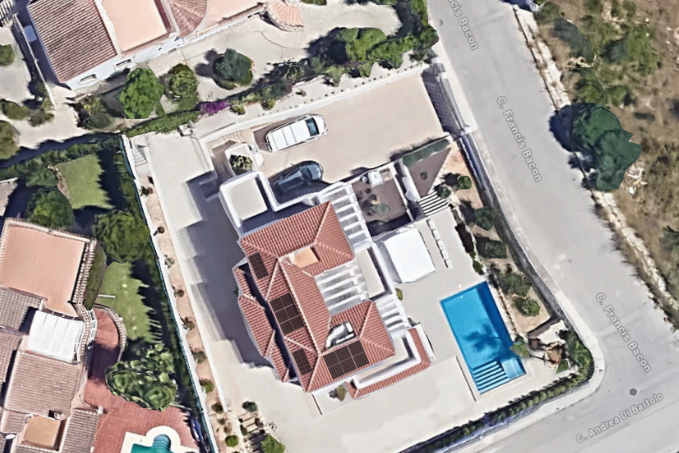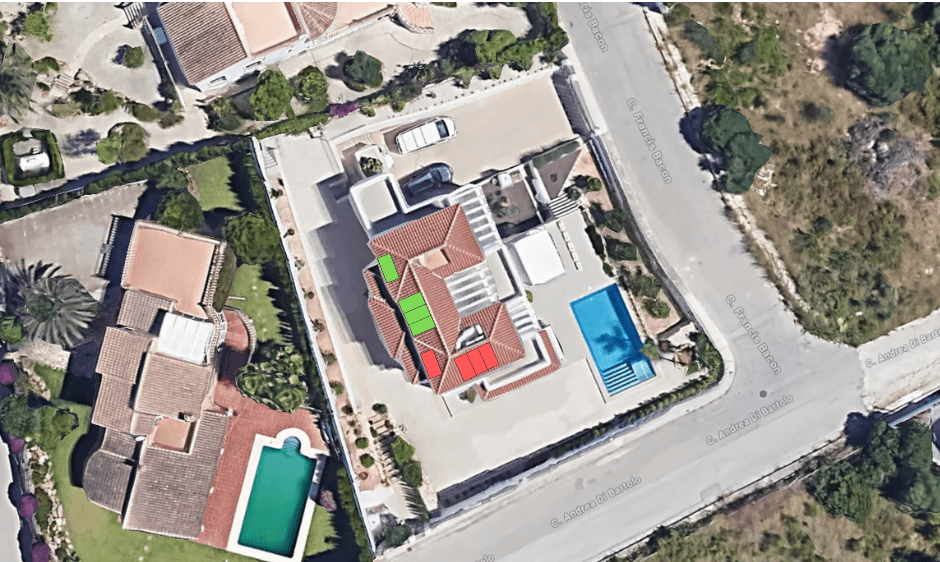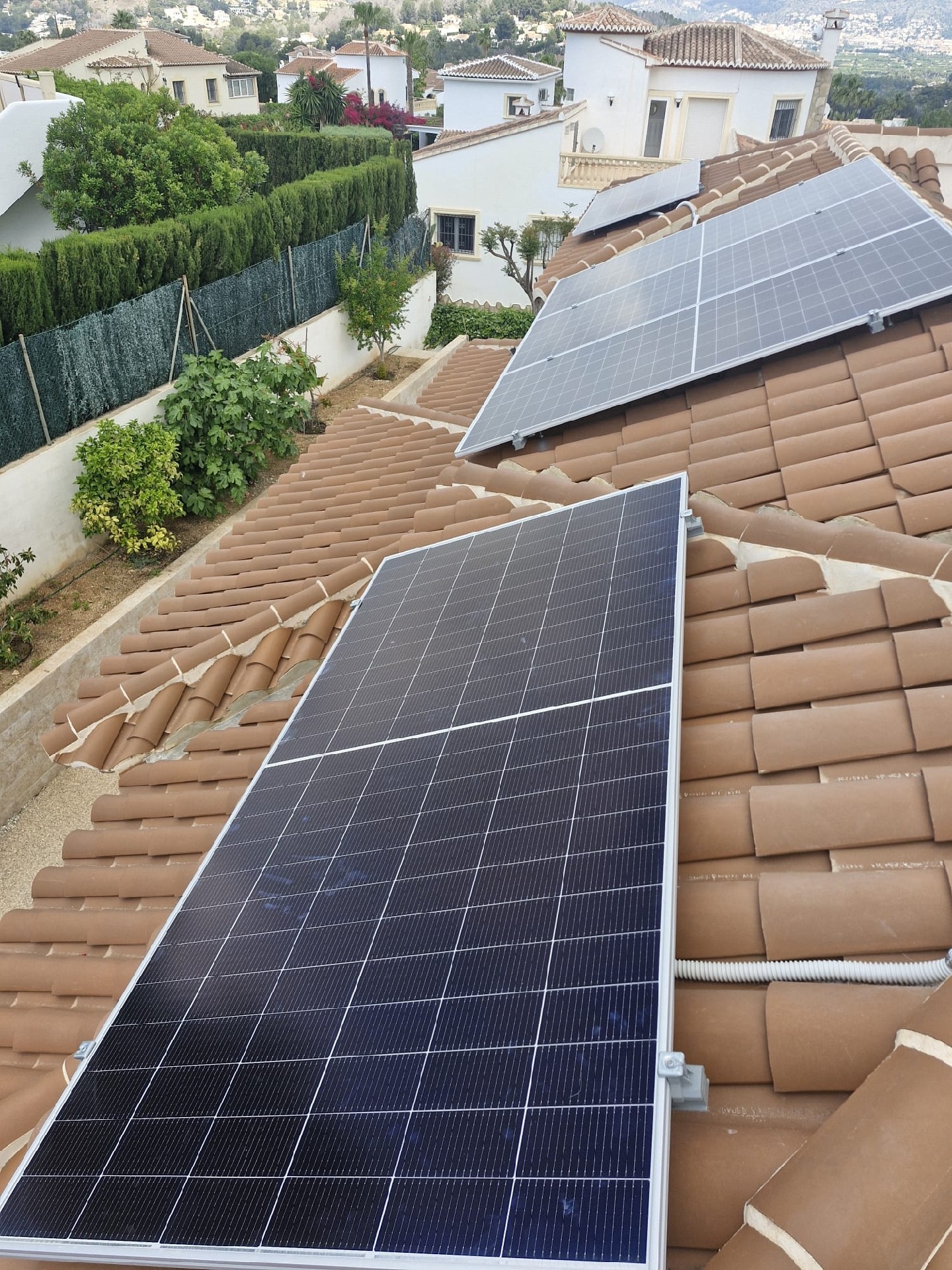Spanish Architecture and Roof Spaces

Installing a solar energy system involves more than just placing solar panels on a roof or open land. To maximize energy production and system efficiency, it is crucial to understand how the orientation of panels and the configuration of strings (series of connected panels) affect performance.
Spanish Homes and Mediterranean Roofs
Many homes in Spain, especially traditional Mediterranean-style houses, don’t have one large, (flat) roof. Instead, they often have multiple small roof sections, each at different angles and heights. These roofs might include sloped tiles, chimneys, terraces, which make the home beautiful but add complexity when planning a solar installation.
For solar installers, this means that instead of installing a single large string of panels, the system often needs to be broken into different strings.
Technical Visit
Before designing your solar system, we always schedule a technical visit to your property. This is a key step, especially for homes with unique or complex roof layouts.
During the visit, we:
- Look at the shape and size of each roof section
- Check the direction each roof faces and its angle
- Identify shaded areas from nearby features, buildings or trees
- Discuss with you where the inverter, batteries, etc. should go
With this information, we can create a custom quotation for your solar installation, designed to get the most energy out of your roof while also keeping the system safe, efficient, and in harmony with the look of your home.
Real-Life Example
Here is an example of a solar panel system installed across several different roof sections at different heights. As you can see, it’s completely possible to work with unique architectural styles. You don’t need a big flat roof to enjoy the benefits of solar energy!


If you are curious whether your roof is suitable for solar panels, the best first step is to send us your location. We are happy to take a look and help you explore your options.
